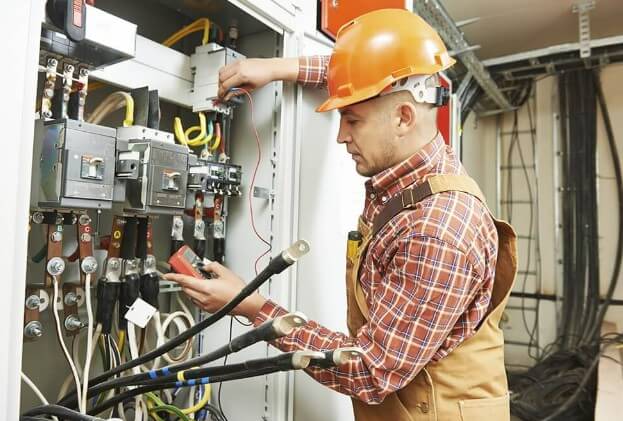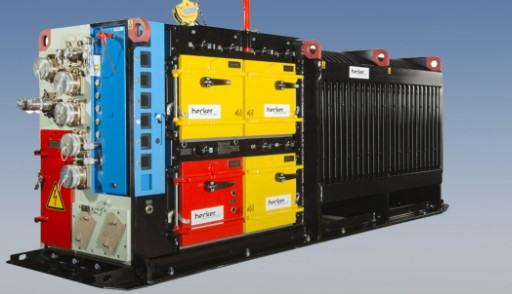Do you have questions regarding industrial equipment and control panels? You may have always wondered what the most important components are in your control panel. Do you want to know what to look for when designing a good control panel? This guide examines the most common types of control panels, their roles in manufacturing, and the electrical components that you should consider during the design phase.
To achieve the best possible results, electrical components must be organized to optimize their performance. The control panel is a valuable tool if you want to influence, control, or change the way industrial equipment works or interacts with each other. The control panel allows you to modify system settings.
Control panels are available in many shapes and sizes. Their purpose is to control a process and provide an operator with a centralized base to manage manufacturing. A properly designed industrial panel allows you to manage utilities and features of the hardware as well as software systems. There are many control settings available that can manage the display, user interface, and other features. Control panels can be closed-loop or open-loop, depending on the needs and usage of the systems. They can also be combined (open-loop and closed-loop) based on the needs and usage. Each of these has its own purpose, but it all depends on what type of feedback is needed to maintain the system at optimal levels.
Each type of control panel contains different components that execute or drive programmed functions. In general, the control panel manages peripheral devices and communicates with the host computer. The software and hardware work together to ensure that the process runs quickly and efficiently with minimal or no downtime.
The control panel can also be used to consolidate all connections and provide power for peripheral devices when needed. While the control panel cannot change some programmed functions, it can be used to turn equipment on or off, adjust motor speed, change movement directions, and open and close valves. Your control panel can help you configure many things in your factory, or even within an individual piece of equipment, all through a single interface. In this guide, we will focus on the most common types of control panels used in industrial manufacturing and automated environments. If this is not what you are looking for, you can contact us for control panel assistance.

GET IN TOUCH
In a hurry? Call us at 276-285-3841
Control Panels:
Control panels are common in industrial environments and manufacturing facilities. These panels house industrial computers that monitor and connect input devices and execute programs. These PLC panels are controlled by input devices and perform important functions such as monitoring and controlling outputs. They can also activate alarms, open/close valves, or start/stop processes. The devices used may include pushbuttons, switches, sensors, or relays. In its simplest form, a PLC control panel is an enclosure that houses the PLC along with all the other components required to distribute low-voltage power, execute programmed outputs, and monitor the circuits of connected devices.
Power Bus Bars, Switchgear, or MCC (Motor Control Centers):
These are also known as MCCs and are installed in large manufacturing facilities where many motors need to be controlled simultaneously. MCCs are used to control motors, such as adjusting speed, torque, or reversing them. Motor Control Centers consist of vertical cabinet sections with a common busbar for power distribution and mounting positions. They are often located near the building's main electrical entrance. The motor control center contains various essential devices, including the line reactor or filter, motor starter, and circuit protection devices like fuses, circuit breakers, and power disconnect switches. MCC panels also contain other control components such as variable-frequency drives (VFDs), PLCs, electrical metering devices, pushbuttons, and indicator lights.
Power Distribution:
Since main power, motor control (like VFDs), and power switch devices (i.e., contactors) generate noise, they are often contained within another enclosure in a manufacturing environment. A typical power distribution board is equipped with a transformer that steps down the voltage from 480V to the appropriate level. Surge protection is in place to prevent overloading, and AC/DC power sources supply 24V DC devices. Connectors, terminal blocks, and power distribution modules are among the peripheral devices.
Power Circuit:
This is defined as any circuit that uses electricity to operate a load on the industrial control panel. Closing and breaking the circuit causes the machine to start or stop or instructs the machine to perform on/off power switching functions.
Control Circuit:
This type of circuit is used to manage all power circuits present on the panel. The control circuit ensures safety by preventing harmonious and short-circuit machine control. These circuits are widely used to automate machines and create safety for human operators.

GET IN TOUCH
In a hurry? Call us at 276-285-3841
Let's move on to the most important thing in the control panel: The Control Components!
Just as the different parts of your body must work together for it to function normally, the components of a control board must work together seamlessly. The overall design, operation, and control of a machine or process depend on the components used. You should be familiar with the key components that make up a typical industrial control panel.
Terminal Blocks:
These modular, insulated blocks are used to connect circuits in the control panel. Terminal blocks improve safety by isolating and grounding other components of the electrical circuit. They are easily accessible and have finger-safe connections that prevent electric shock. Terminal blocks can also be used as test points to enhance circuit safety further.
Contactors:
In many control panel designs, relay circuitry is required to switch high-current devices. This is where contactors come in. Unlike circuit breakers, contactors are not designed to interrupt a current short. Contactors serve as power relay circuitry to switch an electrical load. They can either make or break the power to a device.
Transformers:
A transformer's purpose is to transmit electric power from the primary to secondary circuits. Transformers are static and reduce or increase voltage according to control requirements. They involve the use of primary and secondary coils, resulting in magnetic flux power transfer without changing frequency.
Overcurrent Protective Devices:
These devices are designed to act quickly to protect sensitive electronic and computer systems connected to mains power from electrical surges. Circuit breakers and fuses are overcurrent protection devices that guard against potentially dangerous overcurrent effects. Over currents can result from an overload (power surge) or a short circuit current that creates an electrical fault. Main protection and branch circuit protection are two different things.
This is a list of some of the most important components required for a control panel's operation. These circuits are designed to control a process or piece of equipment and provide an operator or employee with a central base of operations from which they can manage manufacturing.

GET IN TOUCH
In a hurry? Call us at 276-285-3841
Conclusion
A final tip for wiring your control component and ensuring the safety of your panel is to ensure that you have a good earth-to-ground connection. The control panel has an incoming power supply with a grounded wire that needs to be attached to the enclosure. If you don't have a good ground connection, it can cause many problems in the future, either with safety due to electrocution or hours of troubleshooting. When in doubt, ground it!
We are always up-to-date on the latest innovations and technologies at Becker. Our devices are designed to improve control equipment by taking into account the properties listed above. Do you need help with industrial circuit design or creating a control panel? We are always looking for ways to improve machine control and create new systems.
Our information on control panels is intended to be useful. You can find more information about industrial control panel designs in other sources, such as "What makes a good design." Sign up for our newsletter to receive news about new blog posts or promotions.
Contact Us Today
Ready to take control of your mining operations like never before? Discover the power of the Control Panel by Becker Mining USA!
- Unleash Efficiency: Streamline your mining processes and maximize productivity with our cutting-edge Control Panel technology.
- Stay Connected: Monitor and manage your mining equipment remotely, ensuring seamless operations from anywhere on the planet.
- Boost Safety: Enhance worker safety by gaining real-time insights and control over critical systems with the Control Panel.
- Experience Innovation: Harness the latest advancements in mining technology to drive your operations to new heights.
Contact us today to learn more and take the first step toward revolutionizing your mining operations with the Control Panel by Becker Mining USA!
Products We Offer:
- Explosion Proof Equipment
- Transformers
- Arc Guard
- Longwall Electrical Systems
- Capacitor Trip Devices
- Electrical Equipments like capacitor banks, switch houses, junctions, and splice boxes.
Power up your productivity with Becker Mining's ground fault relays - the reliable and efficient solution for all your power distribution needs. Call us today!